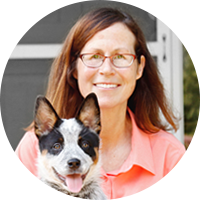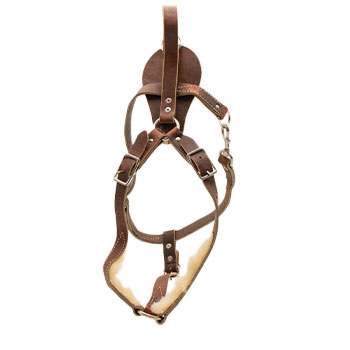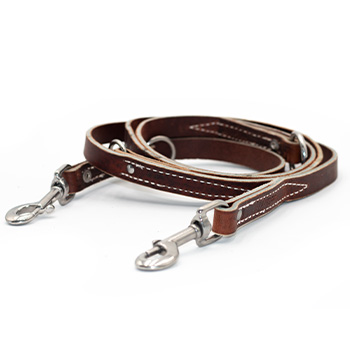May 17, 2011
Our sheriff wants our reserves to form a K-9 unit to back up regular officers. What do you recommend?
Full Question:
My Sheriff Dept. is considering starting a auxiliary K-9 unit to be staffed by some reserve officers, to be spread into the county areas to assist the regular K-9 unit. Because the reserve officers are routinely called out to back up the zone officers we feel this will greatly enhance our k 9 dept since our k9 unit also work regular zones and not strictly k9. The Sheriff wants the dogs to do tracking and narcotics search and not really specialize in "bite," what type of dogs should we look for and should we look at green or pre trained, pups or adults. Any insight you can offer will GREATLY be appreciated. Your information at your sight has been exceptional. Thanks Again!! 
 Ed's Answer:
Ed's Answer:
I have a lot of experience in this are because this is how I began my police K9 work in 1990.
To begin with the sheriff needs to be very selective in who he allows to work a dog. The people he selects need to go through a screening process just like regular K9 Officers. At the minimum, the reserves need to be state certified police officers. They should be good athletes and mature sensible thinkers. It is a rare person who would be chosen for this program that has not been a reserve officer for several years.
I agree with the sheriff, in the beginning the dogs should be tracking and narcotic - not patrol dogs. A reserve officer should be forced to prove his ability as a trainer and handler in these areas before he is trusted with a biting dog. The sheriff would not consider putting a new reserve officer on his swat team, in the same breath he should not consider a reserve officer for a patrol dog handler until this individual has a couple of years of experience working dogs in narcotics and tracking.
The question of the best way to start will depend on the funds available. In most cases money is short and an issue. If this is the case starting with a pup is a great way to go. A pup is going to cost about $1,200.00 by the time its delivered and a selection tested narcotics tracking dog (one that I would be willing to work) is going to cost $3,500.00 to $4.500.00.
I am becoming more and more of a believer in starting tracking at a very young age. If pups are started at 8 weeks and tracked a lot - they grow up tracking. It’s like we imprint the nose work into the dogs. This also goes with the narcotics work. I am a big fan of starting young. I am adamantly against using puppies (i e 6 months to 13 months) to obtain search warrants or to be used for "probable cause" to enter a vehicle. I have written a number of articles on this subject. But if a warrant is obtained without the dog, or a vehicle search is a voluntary search then by all means use the pup to help find the dope (if there is any).
If a pup is purchased for this reason, I would be doing preliminary x-rays at 6 months of age. If there is any question on the hips I would send the x-rays to the OFA and do another x-ray at 9 months. Too much work goes into a pup to wait until it is 24 months old to x-ray for the OFA. If there is a problem, get rid of the dog and start again.
By starting with an older dog your program should be able to have a dog ready to work in 3 or 4 months (with hard work). There is a lot to be said for having a dog ready in that period of time Vs. starting with a pup and not having a fully functional dog for 12 to 15 months.
The dog I started with in 1990 was a female black lab (Gabby) that I got from the dog pound. To be frank - I lucked out. She came from field trial hunting stock and there has not been another dog through our pound since then with this kind of drive. She was strictly a narcotics dog. Over the years she helped seize over $250,000.00 in cash and a bunch of dope. The dog I am working now is a German Shepherd (Otis). The lab was a great drug dog and super for PR. But if you work high crime areas a GSD would be my first choice. Getting Otis out has a settling effect on gang members and unruly people.
To begin with the sheriff needs to be very selective in who he allows to work a dog. The people he selects need to go through a screening process just like regular K9 Officers. At the minimum, the reserves need to be state certified police officers. They should be good athletes and mature sensible thinkers. It is a rare person who would be chosen for this program that has not been a reserve officer for several years.
I agree with the sheriff, in the beginning the dogs should be tracking and narcotic - not patrol dogs. A reserve officer should be forced to prove his ability as a trainer and handler in these areas before he is trusted with a biting dog. The sheriff would not consider putting a new reserve officer on his swat team, in the same breath he should not consider a reserve officer for a patrol dog handler until this individual has a couple of years of experience working dogs in narcotics and tracking.
The question of the best way to start will depend on the funds available. In most cases money is short and an issue. If this is the case starting with a pup is a great way to go. A pup is going to cost about $1,200.00 by the time its delivered and a selection tested narcotics tracking dog (one that I would be willing to work) is going to cost $3,500.00 to $4.500.00.
I am becoming more and more of a believer in starting tracking at a very young age. If pups are started at 8 weeks and tracked a lot - they grow up tracking. It’s like we imprint the nose work into the dogs. This also goes with the narcotics work. I am a big fan of starting young. I am adamantly against using puppies (i e 6 months to 13 months) to obtain search warrants or to be used for "probable cause" to enter a vehicle. I have written a number of articles on this subject. But if a warrant is obtained without the dog, or a vehicle search is a voluntary search then by all means use the pup to help find the dope (if there is any).
If a pup is purchased for this reason, I would be doing preliminary x-rays at 6 months of age. If there is any question on the hips I would send the x-rays to the OFA and do another x-ray at 9 months. Too much work goes into a pup to wait until it is 24 months old to x-ray for the OFA. If there is a problem, get rid of the dog and start again.
By starting with an older dog your program should be able to have a dog ready to work in 3 or 4 months (with hard work). There is a lot to be said for having a dog ready in that period of time Vs. starting with a pup and not having a fully functional dog for 12 to 15 months.
The dog I started with in 1990 was a female black lab (Gabby) that I got from the dog pound. To be frank - I lucked out. She came from field trial hunting stock and there has not been another dog through our pound since then with this kind of drive. She was strictly a narcotics dog. Over the years she helped seize over $250,000.00 in cash and a bunch of dope. The dog I am working now is a German Shepherd (Otis). The lab was a great drug dog and super for PR. But if you work high crime areas a GSD would be my first choice. Getting Otis out has a settling effect on gang members and unruly people.
100% (3 out of 3)
respondents found this answer helpful


Can't find what you're looking for?




